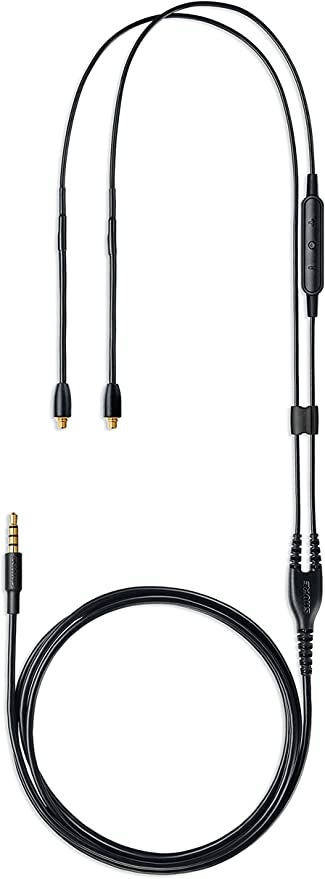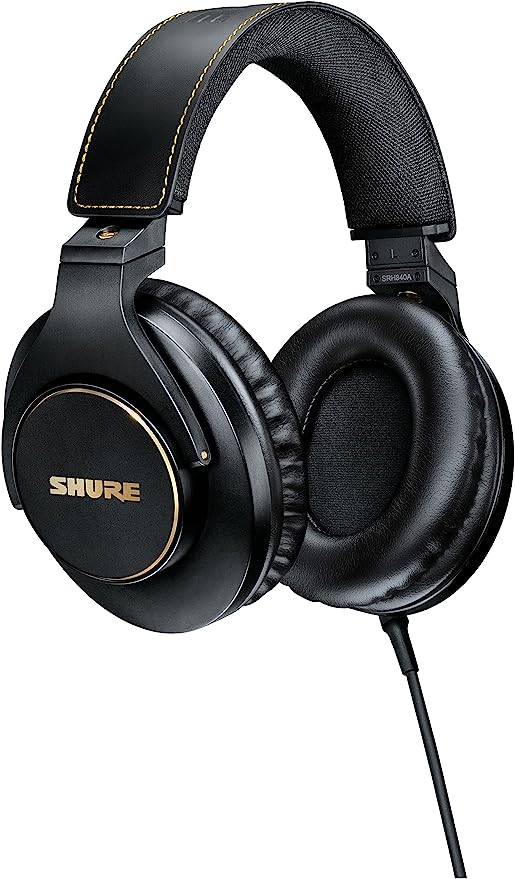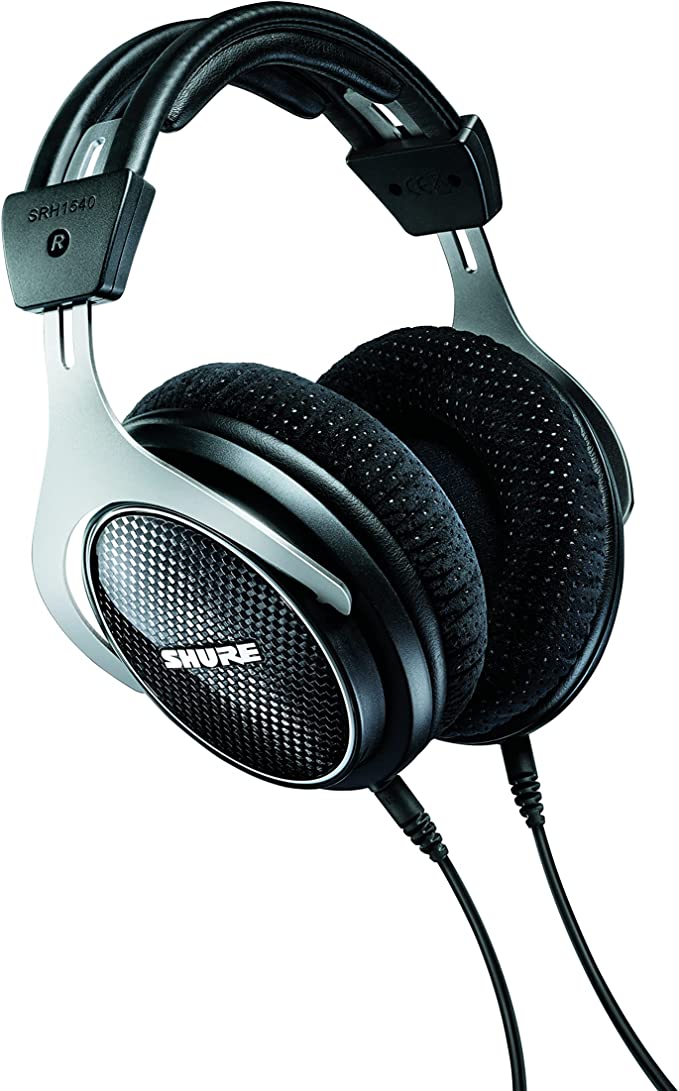Shure BLX288/PG58 Wireless Microphone System: Unchain Your Voice with UHF Technology
Update on March 20, 2025, 3:53 a.m.
Imagine you’re a singer, poised to deliver a powerful performance. Or a presenter, ready to captivate your audience with a compelling speech. But instead of feeling free and connected, you’re tethered to the stage, restricted by a tangled mess of microphone cables. This limitation not only hinders your movement but also stifles your ability to fully engage with your audience. This is where the magic of wireless microphones comes in, offering freedom, flexibility, and a seamless audio experience.

A Century of Sound Without Strings: A Brief History
The quest to transmit audio without wires dates back to the late 19th century, with early experiments in radio broadcasting. Inventors and scientists, driven by the dream of untethered sound, explored various methods of transmitting audio signals through the air. Reginald Fessenden, a Canadian inventor, is credited with achieving the first audio radio transmission in 1906. However, these early attempts were far from practical for widespread use. The development of practical wireless microphone systems took several more decades, with significant advancements occurring in the mid-20th century. These early systems often used the VHF (Very High Frequency) band, but faced challenges with interference and limited range. The move to UHF (Ultra High Frequency) marked a major turning point, paving the way for the reliable, high-quality wireless microphones we use today.
The Science of Sound in the Air: How Wireless Microphones Work
At its core, a wireless microphone system is a miniature radio station. It takes the sound waves produced by your voice or instrument and transforms them into radio waves, which are then transmitted through the air to a receiver. The receiver converts the radio waves back into sound, amplifying them for the audience to hear. Let’s break down the key components and principles involved:

From Sound Waves to Radio Waves: The Basics
When you speak or sing into a microphone, you create vibrations in the air. These vibrations are called sound waves. The microphone’s diaphragm, a thin, sensitive membrane, vibrates in response to these sound waves. These vibrations are then converted into an electrical signal, a fluctuating voltage that mirrors the pattern of the sound waves. This electrical signal is still an analog representation of the sound.
The Magic of Modulation: Getting Your Voice on the Airwaves
This electrical audio signal can’t be transmitted directly as a radio wave. It needs to be “attached” to a higher-frequency radio wave, called the carrier wave. This process is called modulation. Think of it like sending a letter (your audio signal) via a delivery truck (the carrier wave). The truck carries the letter to its destination. There are several types of modulation, but Frequency Modulation (FM) is commonly used in wireless microphone systems. In FM, the frequency of the carrier wave is varied slightly in proportion to the audio signal.
Frequency Matters: Understanding UHF and VHF
Wireless microphones operate on specific radio frequencies. As mentioned earlier, early systems often used the VHF band (roughly 30 MHz to 300 MHz). However, VHF has some significant drawbacks:
- Longer Wavelengths: VHF waves have longer wavelengths, making them more susceptible to interference from obstacles like buildings and even people.
- Crowded Spectrum: The VHF band is also used by many other devices, such as television broadcasts and two-way radios, leading to a higher risk of interference.
UHF (Ultra High Frequency), operating in the range of 300 MHz to 3 GHz, offers several advantages:
- Shorter Wavelengths: UHF waves have shorter wavelengths, allowing them to penetrate obstacles more easily and reducing the likelihood of dropouts.
- Less Crowded Spectrum: While still used by other devices, the UHF band generally has less congestion than VHF, providing more available channels for wireless microphones.
- Wider Bandwidth: UHF offers a wider range of frequencies, allowing for more simultaneous wireless systems to operate without interfering with each other.
Why UHF is King for Professional Audio
Because of these advantages, UHF has become the standard for professional wireless microphone systems. It offers greater reliability, reduced interference, and the ability to use multiple systems simultaneously, making it ideal for demanding applications like concerts, theater productions, and broadcast events.
Decoding the Shure BLX288/PG58: Features and Functionality
The Shure BLX288/PG58 is a dual-channel UHF wireless microphone system, meaning it can handle two microphones simultaneously. It’s designed for ease of use and reliable performance, making it a popular choice for vocalists, presenters, and anyone needing high-quality wireless audio.
The BLX88 Dual-Channel Receiver
The heart of the system is the BLX88 receiver. This unit is responsible for receiving the radio waves from the transmitters (the microphones) and converting them back into audio signals. Key features of the BLX88 include:
- Dual-Channel Capability: Allows you to use two microphones at the same time, perfect for duets, interviews, or presentations with multiple speakers.
- One-Touch QuickScan Frequency Selection: This is a crucial feature. The BLX88 automatically scans the available UHF frequencies and selects the clearest channels, minimizing the risk of interference. This eliminates the need for manual frequency selection, saving time and hassle.
- Microprocessor-Controlled Internal Antenna Diversity: This sophisticated technology uses two internal antennas to receive the signal. The receiver constantly monitors the signal strength from both antennas and automatically switches to the stronger one. This helps to prevent dropouts caused by signal reflections and interference. It’s like having two sets of ears, ensuring you always get the best possible reception.
- LED Indicators:The Two-color audio status indicator. Green: normal audio levels.Red: excessive audio levels (overload/clipping).
The PG58 Microphone: A Closer Look
The BLX288/PG58 system includes two BLX2 handheld transmitters, each equipped with an integrated PG58 microphone capsule. The PG58 is a dynamic microphone, meaning it uses a moving coil within a magnetic field to generate the electrical signal. Dynamic microphones are known for their ruggedness and ability to handle high sound pressure levels, making them a good choice for live vocals. The PG58 has a cardioid polar pattern, which means it’s most sensitive to sound coming from directly in front of the microphone, while rejecting sound from the sides and rear. This helps to reduce feedback and unwanted background noise.

Easy Setup and Operation
One of the key selling points of the BLX288/PG58 is its ease of use. Setting up the system is straightforward:
- Connect the BLX88 receiver to your mixer or amplifier.
- Power on the receiver and the BLX2 transmitters.
- Press the “group” button on the receiver to initiate the QuickScan frequency selection.
- Once the receiver has found the best available group and channel, set the transmitters to match the same group and channel. The “ready” LED on the receiver will illuminate when the connection is established.
Battery Life and Power Management
The BLX2 transmitters are powered by two AA batteries, providing up to 14 hours of continuous use. This is a significant amount of battery life, allowing you to perform for extended periods without worrying about power. While it’s always a good idea to have spare batteries on hand, the long battery life of the BLX2 minimizes the need for frequent battery changes.
Avoiding Interference: Keeping Your Signal Clean
Even with UHF technology, interference is still a possibility. Here are some tips to minimize the risk:
- Line of Sight: Maintain a clear line of sight between the transmitters and the receiver whenever possible. Avoid placing obstacles (walls, metal objects, large groups of people) between the antennas.
- Antenna Placement: Position the receiver’s antennas (or in the case of the BLX88, the unit itself, since it has internal antennas) away from metal objects and other sources of RF interference.
- Frequency Coordination: If using multiple wireless systems, carefully coordinate the frequencies to avoid intermodulation distortion (when multiple signals mix together to create unwanted frequencies). The BLX system’s group scan feature helps with this.
- Turn off unused electronic device.
The FCC and You: Understanding Wireless Microphone Regulations
The Federal Communications Commission (FCC) regulates the use of wireless microphones in the United States. It’s important to be aware of these regulations to ensure legal and interference-free operation.
- Licensing: Most users of wireless microphones like the Shure BLX288/PG58 do not require a license, provided they operate within certain power limits and frequency bands.
- Prohibited Frequencies: Certain frequency bands are reserved for other services (such as public safety and government communications) and are prohibited for wireless microphone use.
- White Space Devices: The FCC has also designated certain “white spaces” (unused TV channels) for use by unlicensed wireless devices, including some wireless microphones.
It’s always a good idea to check the FCC website (www.fcc.gov/cgb/wirelessmicrophones) for the latest regulations and information. Staying informed about these rules will help you avoid potential fines and ensure that you’re operating your wireless system legally and responsibly. Shure also provides resources and tools to help users navigate FCC regulations.
Beyond the Basics: Analog vs. Digital Wireless Systems
The Shure BLX288/PG58 is an analog wireless system. This means that the audio signal is transmitted in a continuous waveform, similar to how traditional radio broadcasts work. However, there’s another type of wireless system: digital wireless. Digital systems convert the analog audio signal into a series of binary digits (0s and 1s) before transmitting it. This digital data is then converted back into an analog audio signal at the receiver.
Each approach has its advantages and disadvantages:
Analog Wireless:
- Pros:
- Generally more affordable.
- Often considered to have a “warmer” or more “natural” sound (though this is subjective).
- Lower latency (the delay between the sound being produced and heard). This is crucial for live performance.
- Cons:
- More susceptible to interference (though UHF systems like the BLX288/PG58 mitigate this significantly).
- Limited number of simultaneous systems compared to some digital systems.
Digital Wireless:
- Pros:
- Greater resistance to interference.
- Can often accommodate more simultaneous systems within a given frequency band.
- Potential for features like encryption and advanced networking capabilities.
- Cons:
- Generally more expensive.
- Can introduce latency (though modern digital systems have minimized this).
- Some users find the sound to be less “natural” (again, subjective).
The choice between analog and digital depends on your specific needs and budget. For many users, the Shure BLX288/PG58’s analog UHF technology provides an excellent balance of performance, reliability, and affordability.
Real-World Applications: From Stage to Studio
The versatility of the Shure BLX288/PG58 makes it suitable for a wide range of applications:
- Live Music Performance: This is a classic scenario. Singers, guitarists (using a bodypack transmitter with an instrument cable), and other performers can move freely on stage without being tethered by cables. The dual-channel capability of the BLX288/PG58 is perfect for duets or bands with multiple vocalists.
- Public Speaking: Lecturers, presenters, and conference speakers can benefit from the freedom and clarity offered by a wireless microphone. No more being stuck behind a podium!
- Houses of Worship: Churches and other religious institutions often use wireless microphones for sermons, musical performances, and other events.
- Fitness Instruction: Fitness instructors can lead classes without worrying about microphone cables getting in the way.
- Karaoke: Even home karaoke enthusiasts can enjoy the professional feel of a wireless microphone system.
- Education: Teachers can make use the microphone move freely in the class.
These are just a few examples. The BLX288/PG58’s ease of use and reliable performance make it a valuable tool for anyone who needs high-quality wireless audio.

The Importance of Signal-to-Noise Ratio (SNR)
While I couldn’t definitively confirm the exact Signal-to-Noise Ratio (SNR) for the BLX288/PG58 from readily available online resources (highlighting the importance of official spec sheets!), understanding SNR is crucial for appreciating audio quality. SNR is a measurement of the strength of the desired audio signal relative to the background noise. It’s expressed in decibels (dB). A higher SNR means a cleaner, clearer signal, as the desired sound is significantly louder than any unwanted noise.
Think of it like this: you’re trying to have a conversation in a noisy restaurant. If the background chatter is almost as loud as the person you’re talking to (low SNR), it’s difficult to hear. But if the person’s voice is much louder than the background noise (high SNR), the conversation is clear and easy to understand.
Wireless microphone systems, even excellent ones like the BLX288/PG58, inherently introduce some noise into the signal. A high SNR indicates that the system is doing a good job of minimizing this noise, preserving the clarity and fidelity of the original sound. While factors like microphone quality and proper gain staging also play a role, SNR is a key indicator of a wireless system’s overall audio performance. Shure is known for engineering microphones and wireless systems with excellent SNR, and while I don’t have the specific number for this model, it’s safe to assume it performs admirably in this regard, given Shure’s reputation.
Conclusion
The Shure BLX288/PG58 wireless microphone system represents a significant advancement in audio technology. It frees performers and presenters from the constraints of cables, allowing for greater freedom of movement and a more engaging connection with their audience. By understanding the underlying principles of UHF technology, frequency selection, and the importance of factors like SNR, users can appreciate the engineering that goes into creating a reliable and high-quality wireless audio experience. The BLX288/PG58 is more than just a microphone system; it’s a tool that empowers clear communication and creative expression. It’s a testament to the ongoing evolution of audio technology, making professional-quality sound accessible to a wider range of users. From the concert stage to the classroom, the BLX288/PG58 delivers the untethered voice, clearly and reliably.










































